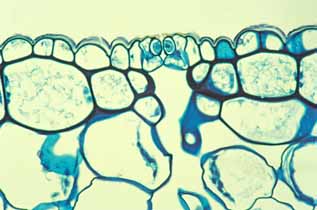|
Welcome
Hi, welcome to my science blog! Remember to visit other blogs and post a message in the FLASHbox below.
Please don't spam or post any vulgaraties.
If you want to see my previous posts, there is an archive box above that is sorted accordingly to month or post title name.
Post a message
Thank You!
|
How do desert plants adapt to the conditions in the desert
Monday, August 23, 2010
Biology (Updated, edited 25 Aug) Cacti are prickly plants, characterisitic of the hot, dry regions of the world. They originated from desert regions with low rainfall and nature has provided them with special cells which accumulate large quantities of water. This enables them to survive the long months of drought. Cactus roots are covered with a cork-like coating to protect them from the heat, they creep under the sand as far as possible in all directions. This means they can absorb what little moisture is present. A cactus' roots can grow as tall as 6 to 7 metres! Bigger than the plant itself! The leaves (spikes, thorns) of the cactus have a very small surface area to prevent loss of any moisture throught transpiration under the hot, burning Sun. These plants have a thick waxy coating to seal in the moisture. Cacti have developed spines which allow less water to evaporate through transpiration by shading the plant, and defend the cactus against water-seeking animals. The enlarged stems carry out photosynthesis and stores the water instead of the leaves. The stem's epidermis has stomata.  This is so that the stems of the cactus will be able to absorb carbon dioxide from it's surroundings and photosynthesize. Many desert plants, unlike normal plants, open up their stomates only at night to take in the carbon dioxide and keep it till the next day for use. Desert plants have developed 3 main adaptive strategies: Succulent A succulent must be able to absorb large quantities of water in short periods. Succulents have extensive, shallow root systems. Drought tolerance To withstand desiccation without dying. Plants in this category often shed leaves during the dry periods and enter a deep dormancy. Most water loss is from transpiration through leaf surfaces. Hence, dropping leaves conserves water in the stems. Drought avoidance Most cacti have a short growing season and long dormancy. Plants which are able to survive in dry conditions are called xerophytic. An example of an adapted species of cactus is the Desert Ironwood.  They are the tallest tree in the Sonoran Desert, growing up to 15-25 feet. They will usually shed their leaves to reduce transpiration. It provides a safe place for seed germination, and protects seedlings from extreme cold. It also protects saplings from the damaging effects of the sun. It has all of the adaptations of a desert plant. Differences in cellular structure and function, as well as in the basic process of creating carbohydrates from water and carbon dioxide also help it to survive in arid conditions. Another plant called stone plants exposes only a few of its leaves. Indeed, Desert plants are amazing, especially in how they are adapted to such environments.
|
 Fellow bloggers!
Heather Lim
Samantha Samuel
Soh Jing Wen
Empty
Empty
Empty
Empty
Empty
Empty
Empty
Empty
Empty
Empty
Empty
Do remember to visit again! |